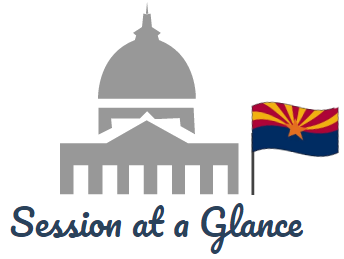February 20,2018 | Triadvocates

1. Can you hear that? It’s the sound of lawmakers, legislative staff and lobbyists taking a deep sigh of relief after wrapping up a long, intense week. Affectionately referred to as “Hell Week” by those down at the Capitol, last week was the last chance for bills to be heard in committee in the chamber of origin (with the exception of the appropriations committees, which have until Friday to hear bills). Last week, committee chairmen packed their agendas, as members pushed hard to keep their bills alive. As a result, some hearings lasted upward of six hours, and each committee most certainly had its fair share of heated debate. Roughly half of all bills introduced cleared the first legislative hurdle and will now start to cross over for hearings in the opposite chamber, where they have until March 23 to receive a hearing before heading up to the governor’s desk for his signature, or back to the chamber of origin for final action on any new amendments. Keep your seatbelts on—the rollercoaster ride is just getting started.
2. Gov. Doug Ducey signed the first bills of the session last week. SB1058 (secretary of state; appropriation; elections), sponsored by Republican Sen. Judy Burges, gives $2.5 million from the general fund to the secretary of state this fiscal year to pay for the CD8 special elections. SB1055 (charter schools; rulemaking exemption), sponsored by Republican Sen. Sylvia Allen, exempts the State Board for Charter Schools from rulemaking requirements, instead directing the board to adopt rules and policies to fulfill its duties. Both bills were approved unanimously by both chambers.
3. Every 10 years, Arizona redraws its congressional and legislative districts to reflect the latest U.S. Census count. The Legislature controlled the redistricting process—until 2000, when voters passed Proposition 106, amending the state constitution and establishing the bipartisan Independent Redistricting Commission (IRC) to draw congressional and legislative district boundaries. The legislative GOP leadership introduced SCR1034 to place an overhaul of the IRC on the November ballot for voters to have the final say. If passed, it would increase the number of IRC members from five (2 Rs, 2 Ds, 1 I) to eight (3 Rs, 3 Ds, 2 I), significantly change the vetting and appointment process, and allow legislators to draw their own maps and select their voters through a referendum process. This would have a major impact on which political party gains legislative and congressional majority. The GOP proponents strongly defend the proposal, touting it will increase bipartisanship and argue that, currently, the Independent member holds too much control. The Democrats find this an attempt to destroy the IRC, and warn of the high risk of gerrymandering. Both parties have expressed discontent with past IRC maps; in 2001, Democrats argued that the final lines favored the Republicans—and in 2011, the Republicans made similar complaints and expressed their frustration with the IRC favoring the Democrats. Recently, SCR1034 passed the Senate Government Committee along party lines and is awaiting further action before going to the full Senate for a vote. If we had to bet, we would put our money on the final vote occurring after the budget is passed and during the final hours of this legislative session.
4. Local businessman and downtown developer Michael Lafferty announced he is entering the race to replace City of Phoenix Mayor Greg Stanton, who is running for the CD9 seat vacated by U.S. Rep. Kyrsten Sinema, as she runs for U.S. Senate. Lafferty is currently a registered Republican, but plans to change his registration and run as an Independent. In addition, he plans to raise campaign dollars traditionally, but will begin the race with $500,000 out of his own pocket to demonstrate his commitment to the race. He’d like to bring his significant business expertise and commitment to downtown economic development to the role of mayor—as he told reporters, he’s “been a downtown person since before anyone was.” Lafferty joins an already crowded field, which includes: Republican Moses Sanchez, Libertarian Nicholas Sarwark, and current City Council Democrats Danny Valenzuela and Kate Gallego. If Stanton resigns by April 20, the election to replace him will take place in August. If he waits to resign, the election will take place in November.
5. Despite the fact that more than a dozen people are running to replace former U.S. Rep. Trent Franks in CD8, two candidates have emerged as the top contenders. Former state lawmakers Debbie Lesko and Steve Montenegro are the top fundraisers and have also attracted large independent expenditure campaign help. Montenegro has been the beneficiary of a Ted Cruz PAC with more than $230,000 being spent to promote the candidate. Lesko has received help from more than $50,000 in campaign spending from Defend US PAC—the same PAC that has also spent more than $80,000 attacking Montenegro. Money does not always equate to votes—but, especially in a crowded election, it definitely helps.


During discussion in Caucus about legislation to establish a memorial for Lees Ferry, which was used in the 1800s to transport early settlers across the Colorado River:
Rep. John Allen: “Mr. Lawrence used to ride the ferry to school every day.”
Rep. Jay Lawrence: “You will be hearing from my attorney after that comment.”
Rep. John Allen: “Who is your attorney? Abraham Lincoln?”
